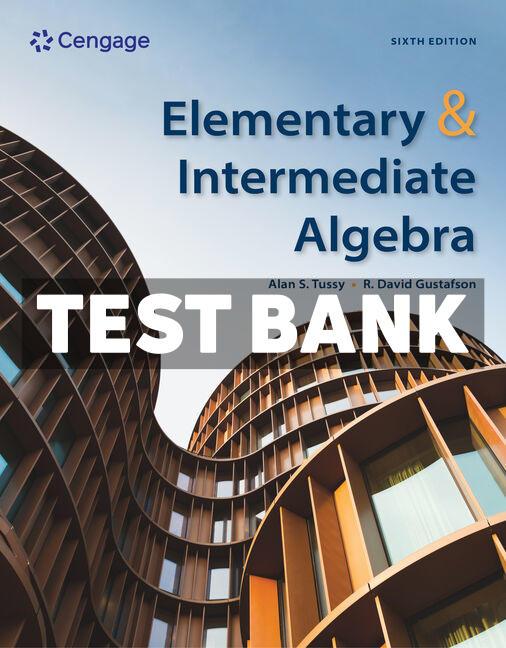
Section 1.1: Introducing the Language of Algebra
1. Raul has an adjusted income of $153,850, is married, and files jointly. Compute his tax.
Revised 2003 Tax Rate Schedules If TAXABLE INCOME The TAX is Is
SCHEDULE Y-1 -
Married Filing Jointly or Qualifying Widow(er)
a. $32,082.50
b. $10,976.00
c. $33,258.50
d. $22,282.50
e. $22,377.50
ANSWER: c
2. Use the data in the table to make a line graph showing the average acreage (in acres) of U.S. farms for the years 1950 through 1990.
Section 1.1: Introducing the Language of Algebra Copyright Cengage Learning. Powered by Cognero.


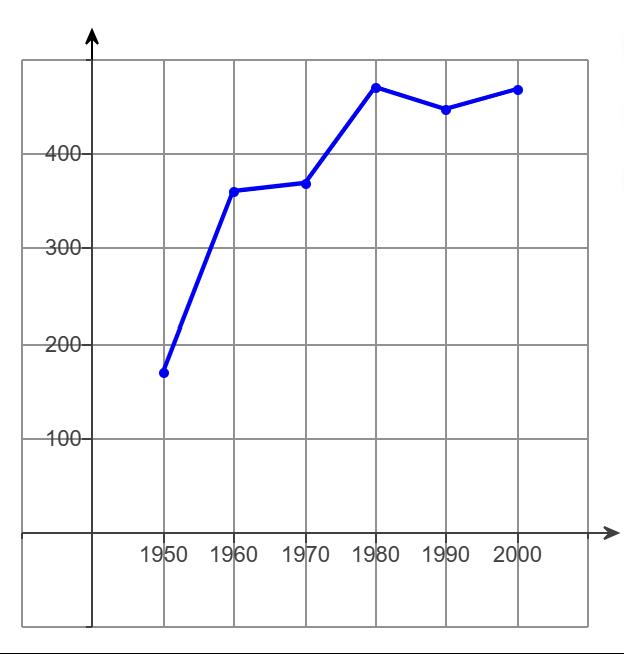
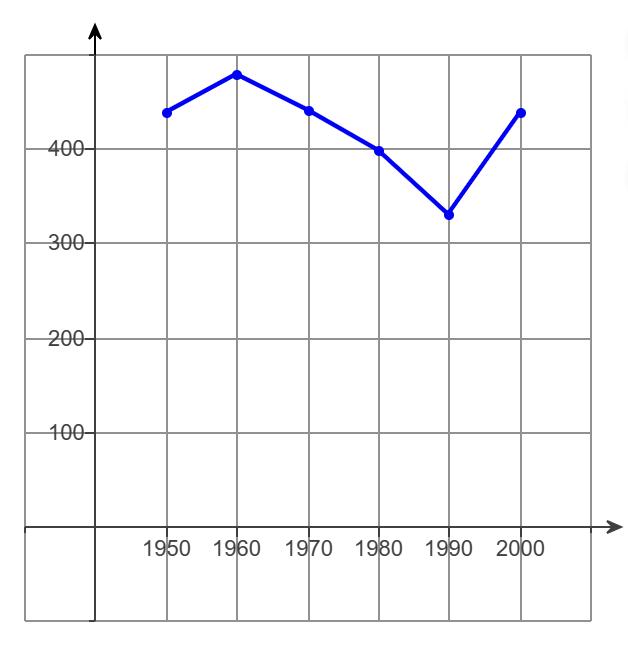
e.

ANSWER: c
3. Write the algebraic expression as a phrase.

a. The quotient obtained when the cube of x is divided by the difference of y and z
b. The quotient obtained when the cube of x is divided by the sum of y and z.
c. The quotient obtained when the product of x and 3 is divided by the sum of y and z.
d. The quotient obtained when the product of x and 3 is divided by the difference of y and z
e. The product obtained when the product of x and 3 is divided by the difference of y and z
ANSWER: d
4. Fill in the blanks to write the algebraic expression as a phrase.

The __________(product/quotient/sum/difference) obtained when the __________(product of x and 3/quotient of x and 3/cube of x) is divided by the __________(product of y and z/quotient of y and z/sum of y and z/difference of y and z).
ANSWER: quotient; product of x and 3; sum of y and z
5. Express the fact in words.
35 (plus or equals) 12 (plus or equals) (35 or 12 or 47)
ANSWER: plus; equals; 47
6. Write the following statement as a mathematical expression.
Section 1.1: Introducing the Language of Algebra Copyright Cengage Learning. Powered by Cognero.
Name: Class:
Section 1.1: Introducing the Language of Algebra
Eight is less than thirty-two.
a.
b.
c.
d.
e.
ANSWER: d
7. In the equation , r represents the distance traveled by a cyclist in miles, and t represents the time spent cycling in hours. Use this equation to find the distance traveled by the cyclist during cycling sessions of 2 hours and 4 hours. Present the results in a table.
Select the correct answer.
ANSWER: a
Section 1.2: Fractions
1. Find the prime factorization of the number.
ANSWER: a
2. Find the prime factorization of the number.





ANSWER: c
3. Find the prime factorization of the number. 968





ANSWER: e
4. Find the prime factored form of the number.
Section 1.2: Fractions
ANSWER: a
5. Find the prime factored form of the number.



ANSWER: a
6. If a natural number is written as the product of prime factors, we say that it is written in form.
a. prime-standard
b. prime-factored
c. prime-polynomial
d. prime-number
ANSWER: b
7. Use the divisibility rules to help determine the prime factorization of the following number.
ANSWER: d
8. Find the prime factorization of the number.
ANSWER: a
9. Find the prime factorization of the number.
Section 1.2: Fractions





ANSWER: c
10. Find the prime factorization of the number. 968





ANSWER: e
11. The denominators for three fractions, in prime-factored form, are , , and Find the LCD for the fractions.
a. 126
b. 84
c. 42
d. 7
e. 21
ANSWER: a
12. Find the prime factorization of the number. 525 a.
ANSWER: a
13. Write the number as a fraction.
Section 1.2: Fractions





e. ANSWER: e
14. What is the numerator of the following fraction?



e. ANSWER: a
15. Write the number as a decimal. Forty-eight thousandths
a. 0.0048
b. 0.048
c. 48.000
d. 0.48
e. 4.8
ANSWER: b


16. The following fractions are equivalent. and a. True b. False
Section 1.2: Fractions
ANSWER: True
17. Find the quotient.





e. ANSWER: b
18. Find the quotient.






e. ANSWER: b
19. Perform the indicated operations involving rational numbers. Express the final answer in reduced form.

Section 1.2: Fractions
ANSWER: e
20. Write the equivalent of the fraction using a denominator of 70.





ANSWER: c
21. Write the number as a fraction.





ANSWER: e
22. Write the equivalent of the fraction using a denominator of 77.
Section 1.2: Fractions






ANSWER: c


23. The following fractions are equivalent. and a. True b. False
ANSWER: True

24. Write the equivalent of this fraction using a denominator of 66. a. b.




e.

ANSWER: c
25. Write the equivalent of the fraction using a denominator of 22.
Section 1.2: Fractions






ANSWER: d
26. Write the number as a fraction with the indicated denominator. 11 as ninths a. b.

c.

d.

e.

ANSWER: b

27. Write the equivalent of the fraction using a denominator of 26. a. b. c.



Section 1.2: Fractions


ANSWER: d
28. Write the number as a fraction with the indicated denominator.
2 as ninths


ANSWER: b

29. Perform the indicated operations involving rational numbers. Express the final answer in reduced form. a.
ANSWER: d
30. Perform the addition. Simplify the result when possible.

Section 1.2: Fractions
e. ANSWER: b
31. Subtract as indicated, and express your answer in lowest terms.





ANSWER: b
32. Subtract the fractions below, and express the answer in its lowest terms.





Section 1.2: Fractions

ANSWER: d
33. Do the addition. Simplify the result when possible.




ANSWER: c
34. Find the sum.






ANSWER: a
35. Perform the addition. Simplify the result when possible.

Section 1.2: Fractions

ANSWER: b




36. Perform the addition. Simplify the result when possible. a. b. c. d.

e.

ANSWER: c
37. The number above the bar in a fraction is called the _____.
a. denominator
b. reciprocal
c. divisor
d. integer
e. numerator
ANSWER: e
38. Perform the multiplication. Simplify the result when possible.

Section 1.2: Fractions
ANSWER: b
39. Find the difference.






e. ANSWER: a
40. Find the difference.




Section 1.2: Fractions
e. ANSWER: c
41. Find the difference.






ANSWER: d
42. Subtract the following mixed numbers.





ANSWER: a
43. Subtract the following mixed numbers.
Section 1.2: Fractions




ANSWER: a
44. The following problem involves the concept of borrowing. (Subtract.)





ANSWER: a
45. Find the difference.




Section 1.2: Fractions


ANSWER: c
46. Find the difference.






ANSWER: e
47. Find the difference.






ANSWER: d
48. Find the sum.
Section 1.2: Fractions





ANSWER: e 49. Find the sum.






ANSWER: c
50. Find the sum.




Section 1.2: Fractions


ANSWER: a
51. Find the sum.






ANSWER: c
52. Find the sum and simplify if necessary.






ANSWER: e
53. Write the improper fraction as a mixed number.
Name: Class:
Section 1.2: Fractions






ANSWER: c
54. Write the mixed number as an improper fraction.

ANSWER: d
55. Divide.




Section 1.2: Fractions


ANSWER: e
56. Divide.




ANSWER: b
57. Multiply.





e.
ANSWER: c
58. Find the difference.
Section 1.2: Fractions






ANSWER: d
59. Find the difference.





e.

ANSWER: a
60. Find the difference.



Section 1.2: Fractions


e. ANSWER: c
61. Find the difference.






e. ANSWER: d
62. Find the difference.






ANSWER: c
63. Find the difference.
Section 1.2: Fractions






ANSWER: e
64. Find the sum and simplify if necessary.

ANSWER:

65. Find the sum and simplify if necessary.

ANSWER:

66. Find the sum and simplify if necessary.

ANSWER:

Section 1.3: The Real Numbers
1. The set of numbers is { ... –3, –2, –1, 0, 1, 2, 3, ...}.
a. irrational
b. whole
c. integer
d. natural
e. negative
ANSWER: c
2. Round 92,781 to the nearest ten.
a. 92,700
b. 92,790
c. 90,000
d. 92,780
e. 92,800
ANSWER: d
3. Round $217,285 to the nearest $100.
$__________
ANSWER: 217,300
4. A number is any number that can be expressed as a fraction with an integer numerator and a nonzero integer denominator.
a. rational
b. whole
c. negative
d. real
e. positive
ANSWER: a
5. The repeating decimal 0.181818 . . . is equivalent to which fraction?
a. b.
c. d.
ANSWER: d
6. Write the decimal in fraction form. 0.33
a. b.


Section 1.3: The Real Numbers

ANSWER: d
7. How can the decimal –43.91 be written as a mixed number?





ANSWER: d
8. How can the decimal –60.19 be written as a mixed number? a.





ANSWER: d
9. Write the decimal in fraction form. 0.99 a.



d
10. Rewrite the decimal 26.8 as a mixed number.
Section 1.3: The Real Numbers





ANSWER: a
11. How can the decimal –69.46 be written as a mixed number? a. b. c. d.





e. ANSWER: c
12. Write the following decimal in fraction form. 0.1



e.

ANSWER: d
13. A decimal point is used when working with dollars, but the decimal point is not necessary when working with cents. For each dollar amount, give the equivalent amount expressed as cents. $4.89, and $0.89
a. 48.9, and 89
b. 4.89, and 89
c. 489, and 89
d. 489, and 890
Section 1.3: The Real Numbers
e. 489, and 8.9
ANSWER: c
14. Write the fraction in decimal form.

a. 0.2188125
b. 0.2953125
c. 0.1853125
d. 0.1953125
e. 0.1951125
ANSWER: d
15. Write the fraction in decimal form.

a. –0.00045
b. 0.00045
c. –0.9
d. 0.045
e. –0.045
ANSWER: e
16. Write the fraction in decimal form.
a. 0.04
b. 0.4
c. 10
d. 0.2
e. 0.02
ANSWER: b
17. Write the number as a decimal.
Eighty-eight thousandths
a. 0.0088
b. 0.088
c. 88.000
d. 0.88
e. 8.8
ANSWER: b
Section 1.3: The Real Numbers
18. Rewrite the decimal 50.3 as a mixed number.
a.
b.


c.
d.


e.

ANSWER: a
19. How can the decimal –58.24 be written as a mixed number?
a.




e.

ANSWER: c
20. A(n) number is a nonterminating, nonrepeating decimal.
a. irrational
b. even
c. opposite
d. integer
e. odd
ANSWER: a

21. is an example of a(n)
a. natural number b. whole number
c. rational number d. irrational number
ANSWER: d
22. List the numbers in the set that are natural numbers.

a.
Section 1.3: The Real Numbers



e. ANSWER: a
Match each description below with the letter of the correct number set.
a. {1,..., 4, 5, 6,...}
b. {0,..., 3, 4, 5, ...}
c. {..., –5, –4, –3,..., 0, ..., 3, 4, 5, ...}
23. integer ANSWER: c
24. whole ANSWER: b
25. natural ANSWER: a
26. Write the decimal in words. 6.098
a. Six and ninety-eight divided by a thousand
b. Six and ninety-eight thousandths
c. Six and ninety-eight hundredths
d. Six and ninety-eight ten-thousandths
e. Six ninety eight thousand ANSWER: b
27. Which symbol indicates "is less than or equal to"?
a.
b.
c.
d.
ANSWER: c
Match each symbol below with the letter of the corresponding phrase.
a. is not equal to
Section 1.3: The Real Numbers
b. is greater than c. is less than d. is less than or equal to e. is greater than or equal to
28. ANSWER: e
29. ANSWER: c
30. ANSWER: d
31. ANSWER: b
32. ANSWER: a
33. Insert one of the symbols , , or in the blank.
a. < b.
c. > ANSWER: c
34. is located between which of the following two numbers on the number line?
a. b. c. d. ANSWER: b
35. Which of the following temperatures is not graphed with a light blue dot on the thermometer shown below?
Section 1.3: The Real Numbers
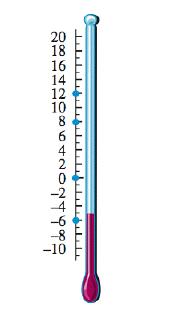
a. b. 0
c. 8 d.
e. 12
ANSWER: a
36. On the number line in the illustration, the origin is the point B.C./A.D.

Section 1.3: The Real Numbers
What happened in the year A.D. 1200?
a. Maya culture declines
b. The Spanish conquer the final Maya city
c. The beginning of Maya culture
d. Invaders overtake Mayapan
e. Maya culture is in its classic period
ANSWER: a
37. An electronics company has strict specifications for silicon chips used in computers. The company will only install chips that are within 0.02 centimeters of the specified thickness. If the thickness specification of the chip type is 0.515 cm, find the lower and upper limit for the acceptable range of thickness of the chips.
a. The lower limit is 0.495 cm and the upper is 0.535 cm.
b. The lower limit is 0.505 cm and the upper is 0.534 cm.
c. The lower limit is 0.596 cm and the upper is 0.534 cm.
d. The lower limit is 0.495 cm and the upper is 0.545 cm.
e. The lower limit is 0.496 cm and the upper is 0.535 cm.
ANSWER: a
38. Construct a decimal number by writing:
9 in the tenths column, 4 in the thousandths column, 8 in the tens column, 7 in the thousands column, 2 in the hundreds column, 7 in the hundredths column, 3 in the ten thousandths column, 5 in the ones column.
ANSWER: 7285.9743
39. Round the number in the left column to the place indicated in each of the other columns.
c.
d.
Section 1.3: The Real Numbers
ANSWER: c
40. Which of the following is NEVER true?
a. b.
c. d.
ANSWER: a
41. Find the absolute value.
a. 6
b. 8
c.
d. 0
e.
ANSWER: a
42. Find the value of the expression.
a.
b. 85
c. 70
d.
e. 0
ANSWER: a
Section 1.4: Adding Real Numbers; Properties of Addition
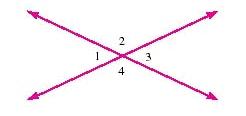
1. Refer to the figure below in which . Find . degrees
ANSWER: 346
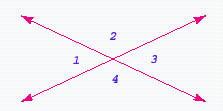
2. In the figure below, Find the sum of =
ANSWER: 256
3. In the figure below, Find the sum of .

a. 230º
b. 310º
c. 100º
d. 130º
e. 40º
ANSWER: b
4. Perform the addition. Simplify the result when possible.

Section 1.4: Adding Real Numbers; Properties of Addition
ANSWER: b
5. Perform the addition. Simplify the result when possible.

ANSWER: c
6. Perform the operation.
a. 1.20008
b. 2.21008
c. 1.90008
d. 2.20008
e. 2.30008
ANSWER: d
7. Add the following numbers.

a. 66.6
b. 70.6
c. 71.6
d. 70.7
e. 70.4
ANSWER: b
8. Find the sum.

Section 1.4: Adding Real Numbers; Properties of Addition




ANSWER: e
9. Find the sum.






ANSWER: a
10. Do the addition. Simplify the result when possible.

ANSWER: c
11. Find the sum.


Section 1.4: Adding Real Numbers; Properties of Addition



e.

ANSWER: c
12. Add.

a. 125
b. 115
c. 135
d. 127
e. 126
ANSWER: a
13. Add.
a. 148
b. 139
c. 150
d. 159
e. 149
ANSWER: e
14. Add.
a. 5,450
b. 4,446
c. 5,449
d. 9,683
e. 9,684
ANSWER: d
15. Find the sum.

a.

Section 1.4: Adding Real Numbers; Properties of Addition




ANSWER: b
16. Find the sum.






ANSWER: c
17. Find the sum.





ANSWER: a

18. Find the sum and simplify if necessary. a.



Section 1.4: Adding Real Numbers; Properties of Addition


ANSWER: e
19. Find the sum.






ANSWER: c
20. Perform the operation.
a. 1.04
b. 2.05
c. 1.74
d. 2.04
e. 2.14
ANSWER: d
21. Add.

a. 8,479
b. 9,379
c. 9,479
d. 9,469
e. 9,489
ANSWER: c
22. Add.
Section 1.4: Adding Real Numbers; Properties of Addition

a. 1,959
b. 1,829
c. 1,859
d. 1,869
e. 1,759
ANSWER: c
23. Find the sum.


ANSWER: a

24. Find the sum. a.




ANSWER: e
25. Do the addition. Simplify the result when possible.

Section 1.4: Adding Real Numbers; Properties of Addition
ANSWER: c
26. Find the sum.






e. ANSWER: c
27. Perform the addition. Simplify the result when possible.


ANSWER: c

28. Perform the addition. Simplify the result when possible. a. b.
Section 1.4: Adding Real Numbers; Properties of Addition
ANSWER: b
29. Find the sum and simplify if necessary.

ANSWER:

30. Find the sum and simplify if necessary.

ANSWER:

31. Find the sum and simplify if necessary.

ANSWER:

32. Find the sum.
a. 0.4
b. 0.8
c. 0.5
d. 0.6
e. 1
ANSWER: a
33. Find the sum.
a. 0.6
b. 1.1
c. 0.7
d. 0.8
e. 1.2
ANSWER: a
34. Match the statement below with the corresponding property of real numbers.
Section 1.4: Adding Real Numbers; Properties of Addition
a. Associative property of addition
b. Commutative property of addition
c. Commutative property of multiplication
d. Additive inverse property
ANSWER: d
35. Which property of addition guarantees that the quantities below are equal?
a. commutative
b. distributive
c. identity
d. additive
e. associative
ANSWER: a
36. In evaluating , what addition should be performed first?
a.
b.
c.
ANSWER: c

37. What property of addition is shown?
a. identity
b. distributive
c. associative
d. commutative
e. additive
ANSWER: c
38. Add.
a. 5,449
b. 4,451
c. 5,450
d. 9,686
e. 9,685
ANSWER: d
Section 1.4: Adding Real Numbers; Properties of Addition
39. Add.
a. 148
b. 137
c. 146
d. 157
e. 147
ANSWER: e
40. Add.
a. 948
b. 960
c. 930
d. 950
e. 969
ANSWER: b
41. Add.
a. 4 b. 1
c. –1
d. –4
e. 0
ANSWER: b
42. Determine the correct statement.
a.
b.
c.
d.
e. ANSWER: d
43. The simplified form of the expression is .
a. True
b. False ANSWER: False
44. A solution of the equation is 6.

Section 1.4: Adding Real Numbers; Properties of Addition
a. True
b. False ANSWER: False
45. The opposite of –29 is 29.
a. True
b. False ANSWER: True
46. Add: – 18 + 18
a. 0 b. 36
c. – 36 d. 20
ANSWER: a
47. Determine the correct statement.
a. If , then a and are called undefined numbers.
b. If , then a and are called positive numbers.
c. If , then a and are called multiplicative inverses.
d. If , then a and are called additive inverses.
e. If , then a and are called commutative numbers.
ANSWER: d
48. The opposite of –50 is 50.
a. True
b. False ANSWER: True
Section 1.5: Subtracting Real Numbers
1.
a. True
b. False
ANSWER: True

2. Subtract. a. 866
b. 966
c. 937
d. 967
e. 1,066
ANSWER: b
3. Subtract:

a. –58
b. 116
c. 136
d. 1,016
e. 126
ANSWER: b
4. Subtract.

a. 21.2
b. 22.4
c. 21.4
d. 21.5
e. 20.4
ANSWER: c
5. Subtract.
a. 11.575
b. 10.585
c. 10.575
d. 10.573
e. 10.475
Section 1.5: Subtracting Real Numbers
ANSWER: c
6. Subtract.

a.
b. –9.693
c.
d.
e. ANSWER: e
7. In the figure below, angle and angle Find

a. 46°
b. 42°
c. 51°
d. 56°
e. 122°
ANSWER: b

8. Refer to the illustration and find if a. b. c. d. e. ANSWER: d
9. Subtract as indicated, and express your answer in lowest terms.

Section 1.5: Subtracting Real Numbers
ANSWER: a
10. Perform the operation.

–
ANSWER: a
11. Subtract as indicated, and express your answer in lowest terms.





ANSWER: b
Section 1.5: Subtracting Real Numbers
12. Subtract the fractions below, and express the answer in its lowest terms.


ANSWER: d
13. Find the difference.






e. ANSWER: c
14. Find the difference.





ANSWER: a
15. Find the difference.

Section 1.5: Subtracting Real Numbers





ANSWER: d

16. Subtract the following mixed numbers. a. –



ANSWER: a
17. Subtract the following mixed numbers.



ANSWER: a
18. Subtract. The following problem involves the concept of borrowing.

Section 1.5: Subtracting Real Numbers



ANSWER: a
19. Find .

ANSWER: c
20. Subtract.

73
ANSWER: a

21. Subtract. a. 19,296
Section 1.5: Subtracting Real Numbers
b. 19,396
c. 19,306
d. 18,286
e. 18,296
ANSWER: a
22. The late Florence Griffith-Joyner set the United States national and world record in the 100-meter sprint: 10.03 seconds. Jenny Thompson set the United States national record in the 100-meter freestyle swim: 53.24 seconds. How much faster did Griffith-Joyner run the 100 meters than Thompson swam it?
a. 42.11seconds
b. 43.22seconds
c. 43.16seconds
d. 43.21seconds
e. 44.32seconds
ANSWER: d
Copyright Cengage Learning. Powered by Cognero.
1. Perform the operation.

a. b. c. d.
e. –7
ANSWER: b
2. Perform the multiplication. Simplify the result when possible.

e.
ANSWER: b
3. Perform the operation.
a. 58626.13365057
b. 58,631.63365057
c. 58,630.33365057
d. 58,629.13365057
e. 58,626.63365057
ANSWER: a
4. Multiply.
a. 9
b. 20
c. 54
d. 4
e. 5
ANSWER: b
Section 1.6: Multiplying and Dividing Real Numbers; Multiplication and Division Properties Copyright Cengage Learning. Powered by Cognero.
5. Multiply.

a. 16,450,760
b. 16,451,760
c. 16,453,760
d. 18,451,760
e. 17,451,760
ANSWER: b
6. Multiply.
a. 5,400
b. 5,635
c. 5,860
d. 5,410
e. 5,625
ANSWER: e
7. Multiply.






ANSWER: c
8. Multiply.

Section 1.6: Multiplying and Dividing Real Numbers; Multiplication and Division Properties Copyright Cengage Learning. Powered by Cognero.
Section 1.6: Multiplying and Dividing Real Numbers; Multiplication and Division Properties





e. ANSWER: d
9. Multiply.



e. ANSWER: d
10. Multiply.
a. 5.51
b. 55.1
c. –55.1
d. –5.51
e. –11.11
ANSWER: d
11. Multiply.

a. 1,193
b. 1,293
c. 1,294
d. 1,283
e. 1,393
ANSWER: b
12. Multiply.

a. 78,074
b. 78,453
c. 78,832
d. 79,590
e. 79,211
ANSWER: e
13. Multiply and reduce your answer to lowest terms.


1
e.
ANSWER: a
14. Multiply.
a. 20.502
b. 0.20502
c. –2.0502
d. –20.502
e. 2.0502
ANSWER: a
15. Complete the statement so that the indicated property is illustrated. Multiplicative inverse property: =

a. 1
b. 0
c.
Section 1.6: Multiplying and Dividing Real Numbers; Multiplication and Division Properties Copyright Cengage Learning. Powered by Cognero.
Section 1.6: Multiplying and Dividing Real Numbers; Multiplication and Division Properties
d. –1
e.
ANSWER: a
16. Multiply.
a. –0.4507
b. –4,507
c. –4.507
d. –450.7
e. –450.7
ANSWER: d
17. Which of the following formulas illustrates the associative property of multiplication?
a.
b.


c.
d.
ANSWER: a
18. State which property of real numbers justifies the statement.

a. commutative property of multiplication
b. associative property of addition
c. commutative property of addition
d. inverse property of multiplication
e. associative property of multiplication
ANSWER: a
19. Match the statement below with the corresponding property of real numbers.
a. associative property of multiplication
b. inverse property of multiplication
c. identity property of multiplication
d. distributive property
ANSWER: c
20. Multiply without using pencil and paper or a calculator.
a. 36,300
Copyright Cengage Learning. Powered by Cognero.
Section 1.6: Multiplying and Dividing Real Numbers; Multiplication and Division Properties
b. 363,000
c. 1,363
d. 463
e. 3,630
ANSWER: a
21. Find the quotient.




e. ANSWER: c

22. Find the quotient. a. b.
c.
d.
e. ANSWER: b

23. Find the quotient. a. –b. c. –

Copyright Cengage Learning. Powered by Cognero.
d.

e. ANSWER: e
24. Divide.

a. 9.87
b. 9.32
c. 10.37
d. 9.27
e. 9.37
ANSWER: e
25. Divide and round to the nearest tenth. a. –
ANSWER: e
26. Divide.

a. 0.2
b. 0.8
c. 0.3
d. 1.3
e. 0.4
ANSWER: c
27. a. True
b. False ANSWER: True
28. Divide:
Section 1.6: Multiplying and Dividing Real Numbers; Multiplication and Division Properties Copyright Cengage Learning. Powered by Cognero.
a. 341
b. 462
c. 292
d. 342
e. 442
ANSWER: d
29. Divide.

ANSWER: e
30. Divide.

a. –
b.
c. –
d. –
e. ANSWER: a
31. Divide.

a. 1
b.
Section 1.6: Multiplying and Dividing Real Numbers; Multiplication and Division Properties Copyright Cengage Learning. Powered by Cognero.
Section 1.6: Multiplying and Dividing Real Numbers; Multiplication and Division Properties
c. d. e. ANSWER: b
32. Divide.
a. 518
b. 504
c. 74
d. 83
e. 73 ANSWER: e
33. Divide.
a. 224
b. 154
c. 3,750
d. 3,690
e. 124 ANSWER: e
34.
a. True
b. False ANSWER: True
35. Divide.

a. 0
b. 33
c. 32
d. 1
e. undefined ANSWER: b
Section 1.7: Exponents and Order of Operations

1. What number is the base in the expression ? ANSWER: –7
2. Simplify the numerical expression. a. b. c. d. e. ANSWER: e




3. Simplify the numerical expression.
a. 1,000 b.

c. d.

e. 10 ANSWER: d
4. Dividing a decimal by is equivalent to multiplying it by which number? a. b. c. d.
e. ANSWER: c

5. Rewrite the following expression using only one exponent: ANSWER:

6. Find the value of the expression .
Section 1.7: Exponents and Order of Operations

ANSWER: a
7. Evaluate the following exponential expression:
a. 512
b. 2,401
c. 49
d. 64
e. 343
ANSWER: e
8. Simplify the numerical expression.

a. 9 b.

c.
d.
e. 64
ANSWER: c
9. Perform the indicated operations using the laws of exponents. Express the result using positive exponents.


e.
ANSWER: b
10. Use the quotient rule for exponents to simplify the expression. Write the result using exponents.
Section 1.7: Exponents and Order of Operations
ANSWER: c
11. Evaluate the power and write your answer as an improper fraction.


e.
ANSWER: a
12. Write the expression without using exponents.
a.
b. c. d.
e.
ANSWER: a
13. Evaluate the expression.
a. 5,662
b. 5,562
c. 5,567
d. 5,551
e. 5,560
ANSWER: b
Name: Class:
Section 1.7: Exponents and Order of Operations
14. Evaluate.
ANSWER: 0
15. Simplify the numerical expression.
a. –55
b. 82
c. –39
d. –31
e. 3,657
ANSWER: a
16. Evaluate the expression.
ANSWER: 160
17. Simplify the numerical expression.

a. 109
b. 111
c. 104
d. 100
e. 108
ANSWER: e
18. Simplify the numerical expression.

a. 128
b. 125
c. 120
d. 114
e. 118
ANSWER: c
19. Simplify the numerical expression.

a. –2.65
b. –1.65
Name: Class:
Section 1.7: Exponents and Order of Operations
c. 0.35
d. –4.65
e. 1.35
ANSWER: c
20. Evaluate the expression.

a. –18.1
b. –12.7
c. –15.6
d. –14.5
e. –11.7
ANSWER: d
21. Simplify the numerical expression.

a. –11
b. –7
c. –3
d. –1
e. –6
ANSWER: d
22. Simplify the numerical expression.
a. 5
b. 0
c. 2
d. –1
e. –5
ANSWER: b
23. Evaluate the expression.

ANSWER:
24. Evaluate the expression

a. 133
Section 1.7: Exponents and Order of Operations
b. 149
c. 399
d. 397
e. 63
ANSWER: c
25. Simplify the expression.

a. 5
b. 13.25
c. 77
d. 11
e. 80
ANSWER: a
26. Perform the operations.

a. b.
c. d.

e. ANSWER: e
27. Evaluate the expression.

a.
b.
c. 3
d. 21
e. ANSWER: d
28. Perform the operation.
Section 1.7: Exponents and Order of Operations

e. ANSWER: c
29. Perform the operation.

ANSWER: e
30. Evaluate the following expression.
ANSWER: –25.7
31. Simplify the expression.
a. –3
b. –1
c. 1
d. 6
e. –6
ANSWER: d
32. Evaluate the expression.
a. b. c. d. e. ANSWER: c
Section 1.7: Exponents and Order of Operations
33. Evaluate the expression.
a. b. c.
d.
e.
ANSWER: c
34. Simplify the expression.
a. 2
b. 21.25
c. 25
d. 8
e. 32
ANSWER: a
35. Write the following number in standard decimal form.

a. 30,500
b. 31
c. 305,000
d. 3,050
e. 305
ANSWER: d

36. Simplify the numerical expression. a. b. c. d. e.
ANSWER: a
Section 1.7: Exponents and Order of Operations
37. Evaluate the expression.

a. 10.5
b. 6
c. 11
d. –5
e. 1
ANSWER: e
38. Evaluate the expression.

a. b.
c.
d.
e. ANSWER: d
39. Evaluate the expression .
a. 61
b. 75
c. 51
d. 48
e. 36
ANSWER: c

40. Simplify the numerical expression .
a. 128
b. 1,024
c.

d. 512
e. 256
ANSWER: d

Section 1.7: Exponents and Order of Operations
41. Evaluate the expression.

a. –12
b. –3
c. 3
d. 21
e. –21
ANSWER: d
42. Perform the operations.

a. 96
b. 32
c. –32
d. –64
e. 64
ANSWER: d
43. Simplify the expression.

ANSWER: 6
44. Simplify the numerical expression.

a. 16
b. 15
c. –16
d. 18
e. –12
ANSWER: a
45. Evaluate:

a. 6 b. 5
c. d.
ANSWER: b
Section 1.7: Exponents and Order of Operations
46. Evaluate.

a. –148
b. –150
c. –153
d. –159
e. –157
f. –164
g. –145
ANSWER: c
47. Evaluate the expression.


ANSWER: a
48. Find the mean of the list of data. 11, 13, 15, 15, 13, 11
a. 14
b. 12
c. 15
d. 16
e. 13
ANSWER: e
49. Find the mean of the list of data. 40, 66, 43, 36, 81, 59, 98, 105
a. 65
b. 64
c. 67
d. 66
Section 1.7: Exponents and Order of Operations
e. 68
ANSWER: d
50. Frank's algebra grade is based on the average of four exams, which will count equally. His grades are 85, 80, 80 and 75. Find his average.
a. 75
b. 80
c. 85
d. 95
e. 90
ANSWER: b
51. Several computer stores reported differing prices for toner cartridges for a laser printer (in dollars): 50, 59, 78, 79, 74, 76, 58, 54, 79. Find the mean price of a toner cartridge.
a. $68.44
b. $67.44
c. $67.64
d. $67.24
e. $67.34
ANSWER: b
52. A student received scores of 32, 53, and 76 on three quizzes. His sister received scores of 53, 57, and 58. Find the better average to the nearest integer.
a. 52
b. 55
c. 56
d. 54
e. 53
ANSWER: c
53. The mean of several values is given by the of the values divided by the number of values.
a. product
b. sum
c. quotient
d. average
e. difference
ANSWER: b
Section 1.8: Algebraic Expressions
1. Consider the algebraic expression below. What are the factors of the third term?
a. 5, x, y
b. 5, x, z
c. 17
d. 3, x, z
e. 17, x, z
ANSWER: e
2. Consider the algebraic expression below. Find the product of the numerical coefficients of each term.
3xy + y + 21xyt
a. 70
b. 64
c. 62
d. 65
e. 63
ANSWER: e
3. Identify the terms of the expression.
ANSWER:

4. What is the variable part of the term –3nx?
a. n
b. –3
c. nx
d. –3nx
e. x
ANSWER: c
5. What is the variable part of the term 3bx?
a. b
b. 3
c. bx
d. 3bx
e. x
ANSWER: c
6. Identify the terms of the expression.
Section 1.8: Algebraic Expressions
ANSWER:

7. Let x, y, and z represent three real numbers. Write an algebraic expression to denote the product of z, x, and y
a.
b.
c.
d.
e.
ANSWER: c
8. The heights of two trees are shown in the illustration below. Find the sum of their heights, if h = b, and H = b + 14.
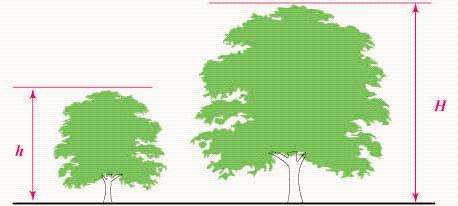
a. b
b. 14
c. 2b + 14
d. b + 14
e. 2b + 28
ANSWER: c
9. Express the statement using one of the words sum, difference, product, or quotient. 2x = 9
a. The difference of 2 and x is 9.
b. The quotient of 2 and x is 9.
c. The product of 2 and x is 9.
d. The difference of 9 and x is 2.
e. The sum of 2 and x is 9.
ANSWER: c
10. If a highway information sign says it is x miles to city A and y miles to city B, which of the following expressions does NOT represent the distance from city A to city B
Section 1.8: Algebraic Expressions


a. I and III b. III and IV
c. I and II d. II and IV
ANSWER: b
11. Let and . Write the phrase as an algebraic expression, and evaluate it.
z less than y
e.
ANSWER: b
12. A girl had d dollars, and her brother had $9 more than three times that amount. How much did the brother have?
a.
b.
c.
d.
e.
ANSWER: e
13. The following illustration shows a rack that contains dress shoes and athletic shoes. If there are m pairs of dress shoes in the rack, how many pairs of athletic shoes are there in the rack?
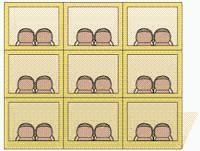
ANSWER:
14. Assume that and Find the values of the two expressions. and
Section 1.8: Algebraic Expressions
a. 48 and 48
b. 36 and 36
c. 45 and 51
d. 48 and 36
e. 36 and 48
ANSWER: b
15. Assume that and Show that the expression represents a real number by finding the real-number answer.
a. –11
b. –80
c. 11
d. 21
e. –21
ANSWER: e
16. Assume that and . Show that the expression represents a real number by finding the real-number answer.
a. 17
b. –21
c. –38
d. 38
e. 21
ANSWER: c
17. Evaluate the expression, given that x = 2, y = 1, and z = 6.
a. 10
b. 6
c. 5
d. 9
e. 4
ANSWER: b
18. Assume that , , and Find the values of the expressions. and


a. –100 and –80
b. 100 and 100
c. 80 and –100
Copyright Cengage Learning. Powered by Cognero.
Name: Class:
Section 1.8: Algebraic Expressions
d. 100 and –100
e. 80 and 80
ANSWER: b
19. Evaluate the polynomial for b = 8.

a. 3,585
b. 3,619
c. 3,614
d. 3,586
e. 3,554
ANSWER: d
20. Evaluate the polynomial for b = –3.
6b + 5
a. –13
b. –23
c. –18
d. 13
e. 23
ANSWER: a
21. Evaluate the algebraic expression for the given value of the variable.
8(x – 5) – (x – 3) – 2(2x – 2), x = 4
ANSWER: –21
22. Evaluate the algebraic expression for the given values of the variables.
8(x – 1) – 9(x + 3), x = –4
a. –15
b. 23
c. –35
d. –31
e. 4
ANSWER: d
23. Evaluate the algebraic expression for the given value of the variable.
Copyright Cengage Learning. Powered by Cognero.
Section 1.8: Algebraic Expressions
ANSWER: a
24. Evaluate for a. 2 b. –6
c. –2 d. –18
ANSWER: a
Section 1.9: Simplifying Algebraic Expressions Using Properties of Real Numbers
1. Rewrite the following expression using the commutative and associative properties of multiplication.
Select the correct answer. a. b. c. d. e. ANSWER: d
2. Simplify the expression

Select the correct answer. a.



ANSWER: b
3. In the expression , which factor is distributed?
a. 8
b. t + 7
c. –7
d. 7
e. –8
ANSWER: e
4. In the expression , which factor is distributed?
a. 2
b. m + 4
c. –4
d. 4
e. –2
Section 1.9: Simplifying Algebraic Expressions Using Properties of Real Numbers
ANSWER: e
5. Determine the correct statement.
e.

ANSWER: b
6. Use the distributive property to write the expression without parentheses. Simplify the result, if possible. a. b.
ANSWER: a
7. Use the distributive property to write the expression without parentheses. Simplify the result, if possible.
e.
ANSWER: d
8. What exponent must appear in the box to make the terms like terms?

a. 25
b. 3
c. –4
d. 4
e. –1
ANSWER: d
9. Simplify the following expression by combining like terms.
ANSWER:
10. Identify the like terms from the list below and add them.
Name: Class:
Section 1.9: Simplifying Algebraic Expressions Using Properties of Real Numbers
ANSWER:
11. Simplify the algebraic expression by combining similar terms.
ANSWER: b
12. Simplify the algebraic expression by removing parentheses and combining similar terms. a. b. c. d.
e.
ANSWER: b
13. Simplify the algebraic expression by removing parentheses and combining similar terms. 3(2x + 9) + 3(3x – 7)
a. 15x – 6
b. –15x + 16
c. 15x + 6
d. –15x – 16
ANSWER: c
14. Simplify the algebraic expression by removing parentheses and combining similar terms. 2(n 2 – 3) – 7(4n 2 + 1)
a. –26n 2 + 7
b. 26n 2 + 13
c. 26n 2 – 7
d. –26n 2 + 12
e. –26n 2 – 13
ANSWER: e
15. Simplify the algebraic expression by removing parentheses and combining similar terms.
Section 1.9: Simplifying Algebraic Expressions Using Properties of Real Numbers
2(–x – 5) – 6(3x + 1) – 5(x + 2)
a. –25x – 26
b. –23x – 26
c. –23x – 22
d. 23x + 26
e. –25x – 22
ANSWER: a
16. Simplify the expression. a. b.
e.

ANSWER: a

17. Complete the operation and simplify if necessary. a.


ANSWER: e
